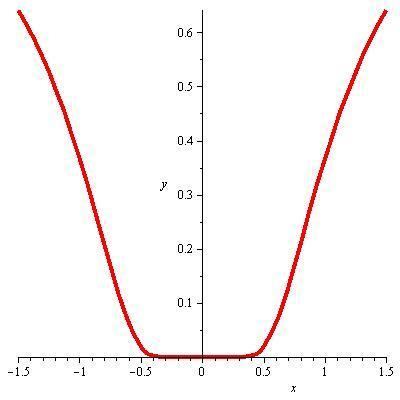 | ||
In mathematics, especially real analysis, a flat function is a smooth function ƒ : ℝ → ℝ all of whose derivatives vanish at a given point x0 ∈ ℝ. The flat functions are, in some sense, the antitheses of the analytic functions. An analytic function ƒ : ℝ → ℝ is given by a convergent power series close to some point x0 ∈ ℝ:
In the case of a flat function we see that all derivatives vanish at x0 ∈ ℝ, i.e. ƒ(k)(x0) = 0 for all k ∈ ℕ. This means that a meaningful Taylor series expansion in a neighbourhood of x0 is impossible. In the language of Taylor's theorem, the non-constant part of the function always lies in the remainder Rn(x) for all n ∈ ℕ.
The function need not be flat at just one point. Trivially, constant functions on ℝ are flat everywhere. But there are other, less trivial, examples.
Example
The function defined by
is flat at x = 0. Thus, this is an example of a non-analytic smooth function.
